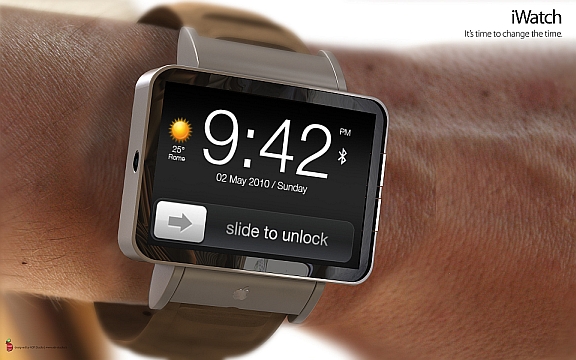The USPTO has published an Apple patent application today (via AppleInsider) that could offer a glimpse at how any potential iWatch may work, in terms of gathering data from the web. The patent describes a method for sharing a network connection over Bluetooth 4.0, the low-energy specification used in modern iOS devices that can provide intelligent, intermittent context-based pairing.
Apple’s invention would not create a persistent hotspot in the same way that sharing via Bluetooth or Wi-Fi from your iPhone does currently; instead, it would check in periodically, seek out updates from iCloud, grab push notifications, messages, news, weather and other data and then shut down again, returning to a power conserving state.
The low-power aspect is the key ingredient in this mix. Smartwatches that currently exist, including the Galaxy Gear, handle data connections via Bluetooth, too, but Apple’s patent seems designed to introduce as much power savings as is possible, while also taking any management of connection out of the user’s hands, so they don’t need to worry about when it is and isn’t active. It’s worth noting that Apple also acquired low-energy chipmaker Passif back in August, which provides it with more expertise regarding Bluetooth LE communications.
Apple mentions devices that don’t themselves contain any kind of network radio in the patent, which infers, without directly calling out, wearables such as the rumored iWatch we’ve been hearing so much about. Other analyst reports and industry information suggest that an iWatch could also come with its own Wi-Fi or cellular radios on board, however, so this Bluetooth LE hotspot feature is likely just one of many possibilities Apple has worked on in its testing facilities.
Of course, an iWatch is still mostly just a myth at this point, with no solid signs we’ll see one hit production any time soon. But this patent indicates that Apple is at least working on the thorniest problems associated with wearables. Battery life is a primary concern – so far, even the best-in-class smartwatches offer only a theoretical maximum of 7 days without the need for a charge, which is good but not great. The point at which wearable tech becomes generally palatable is the point at which it becomes nearly invisible to a user. Adding one more things people have to remember to plug in nightly isn’t going to set the category aflame.
